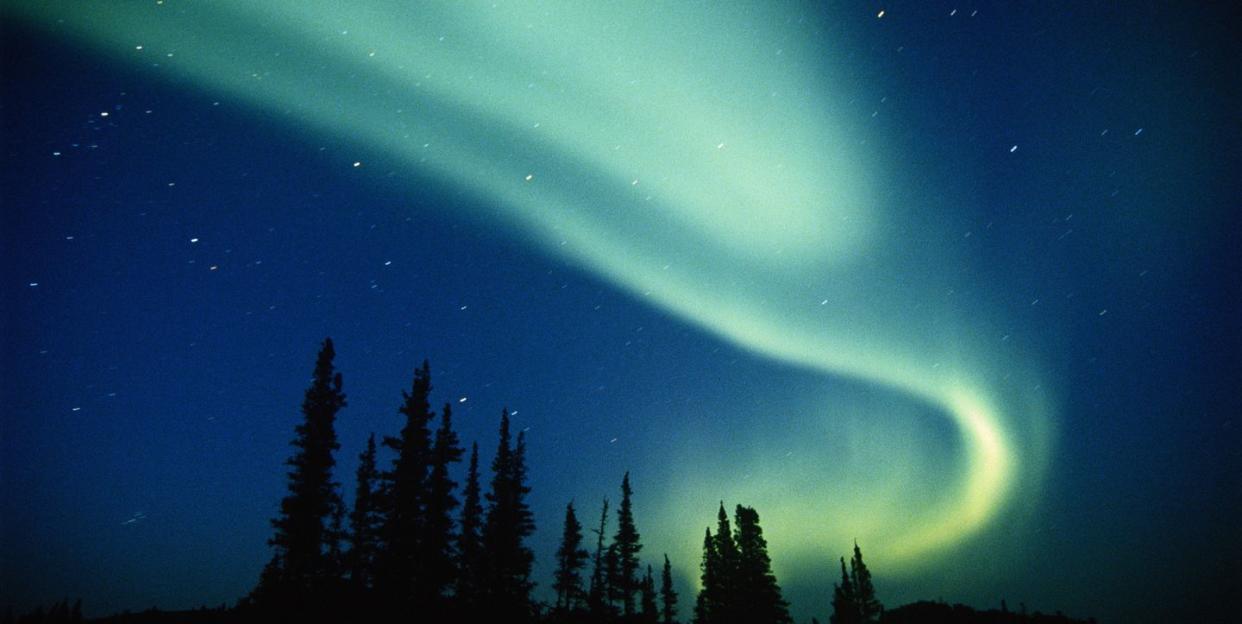The Northern Lights May Be Visible in Mainland U.S. Tonight—Here’s How to Watch

The northern lights may be visible from the mainland U.S. on Thursday night beginning at 9 p.m. and ending at 3 a.m. Friday morning.
These lights, called the aurora borealis, are typically seen near the North Pole in Alaska and Canada.
People in rural areas of Pennsylvania, Iowa, and Oregon will likely have the best views of the lights.
There’s no need to travel north to see breathtaking sky views this week. A strong geomagnetic storm may bring the stunning colors of the northern lights to the northern part of the mainland U.S. this week (where they’re not typically seen), according to the National Oceanic Atmospheric Administration. This phenomenon, scientifically known as the aurora borealis, is usually only visible near Alaska, Canada, and the North Pole, but this strong storm may make it easier for those living in the northern U.S. to catch a glimpse of the spectacular show. Here, find out how to get a peek at the northern lights.
How and when to see The Northern Lights
The storm watch is in effect from August 17 through 19 and could push the aurora lights farther south, making them visible from regions in the mainland U.S. Parts of the Midwest, Northwest, and much of the Mid-Atlantic and Northeast are likely to catch a glimpse of the northern lights tonight and tomorrow, according to The Weather Channel. Though there is a storm watch effective through Friday, your best bet to see the phenomenon is Thursday night between 9 pm. and Friday at 3 a.m.
The best views of the northern lights are weather permitting, so a cloudy area may not have the sights you’re hoping for. Be sure to check your local weather channel, because a clear, dark night is ideal for viewing. Additionally, areas close to major cities experience a lot of light pollution, making it difficult to see the lights. Those who are viewing from rural areas in Pennsylvania, Iowa, and Oregon will likely get the best views of tonight’s light display. And of course, scan the sky when you’re at your viewing location—the lights can come from any direction.
A 30-minute forecast of the northern lights can be found via The Space Weather Prediction Center.
What is an aurora?
An aurora is a luminous glow that can be seen around magnetic poles of the northern and southern hemispheres, according to The University of Alaska. The light is typically caused when electrically charged particles streaming from the sun in the solar wind enter Earth’s atmosphere and collide with atoms of gas (like oxygen and nitrogen). This causes the electrons and protons from the sun to gain energy, which is released in the form of light. This causes the light display we know as the northern lights.
This is happening now because it is expected that recent bursts from the sun, called a coronal mass ejection (CME), may collide and consume another, which would create a cannibal CME event. These can cause strong geomagnetic storms and fast solar winds, known as a recurrent coronal hole high-speed stream. Together, it’s expected they will escalate to a G3, which is a geomagnetic storm.
You Might Also Like

